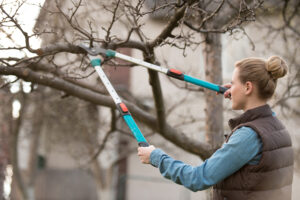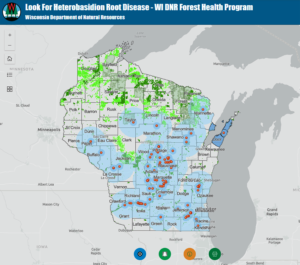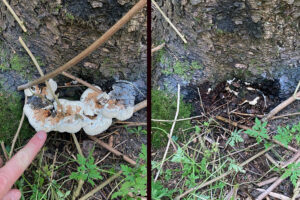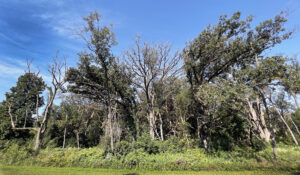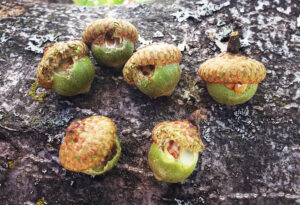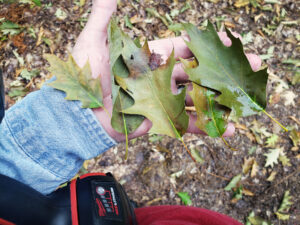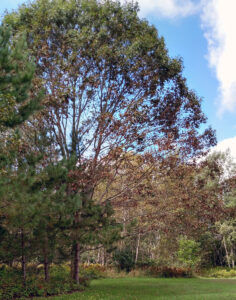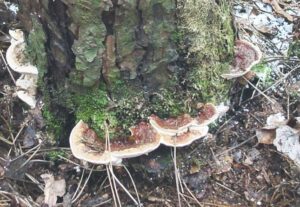
A tree shows fruiting bodies of Heterobasidion root disease at its trunk. / Photo Credit: Wisconsin DNR
By Kyoko Scanlon, DNR Forest Pathologist
Kyoko.Scanlon@wisconsin.gov or 608-235-7532
Heterobasidion root disease (HRD), a destructive fungal disease, continues to be found in Wisconsin.
The Wisconsin Department of Natural Resources (DNR) has confirmed detections in several stands over recent months.
The DNR’s 6-mile and 25-mile buffer zone maps have been updated based on the locations of the newly confirmed stands. The most notable changes due to expanded buffer zones have taken place in Door, Marinette, Milwaukee and Pierce counties.
Continue reading “Heterobasidion Root Disease Online Maps Updated”


